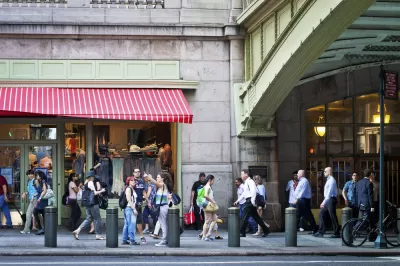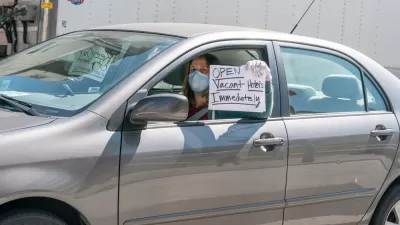The densest city in the country is struggling with the rapid spread of the virus, and close proximity is likely a primary factor.

"New York has tried to slow the spread of the coronavirus by closing its schools, shutting down its nonessential businesses and urging its residents to stay home almost around the clock. But it faces a distinct obstacle in trying to stem new cases: its cheek-by-jowl density," writes Brian M. Rosenthal.
The coronavirus is spreading throughout the city and region at an alarming rate. The high density puts people in close contact on public transit, in public spaces, and in apartment buildings.
Rosenthal also looks at Los Angeles, where the number of confirmed coronavirus cases and deaths are much lower than in New York City. The population of Los Angeles is half of New York City’s, with less crowded transportation, housing, and tourist spaces. In addition, other factors might be contributing to these differences, including warmer weather, less testing in Los Angeles, and better containment.
"Still, public health experts said that density was likely the biggest reason for why the virus has torn through New York City and not yet hit to the same degree elsewhere. They urged other cities and towns around the country to pay attention," says Rosenthal.
For more on the urban density debate that has grown from the spread of the pandemic and the public policy response, see previous coverage from Planetizen.
FULL STORY: Density Is New York City’s Big ‘Enemy’ in the Coronavirus Fight

Alabama: Trump Terminates Settlements for Black Communities Harmed By Raw Sewage
Trump deemed the landmark civil rights agreement “illegal DEI and environmental justice policy.”

Planetizen Federal Action Tracker
A weekly monitor of how Trump’s orders and actions are impacting planners and planning in America.

The 120 Year Old Tiny Home Villages That Sheltered San Francisco’s Earthquake Refugees
More than a century ago, San Francisco mobilized to house thousands of residents displaced by the 1906 earthquake. Could their strategy offer a model for the present?

In Both Crashes and Crime, Public Transportation is Far Safer than Driving
Contrary to popular assumptions, public transportation has far lower crash and crime rates than automobile travel. For safer communities, improve and encourage transit travel.

Report: Zoning Reforms Should Complement Nashville’s Ambitious Transit Plan
Without reform, restrictive zoning codes will limit the impact of the city’s planned transit expansion and could exclude some of the residents who depend on transit the most.

Judge Orders Release of Frozen IRA, IIJA Funding
The decision is a victory for environmental groups who charged that freezing funds for critical infrastructure and disaster response programs caused “real and irreparable harm” to communities.
Urban Design for Planners 1: Software Tools
This six-course series explores essential urban design concepts using open source software and equips planners with the tools they need to participate fully in the urban design process.
Planning for Universal Design
Learn the tools for implementing Universal Design in planning regulations.
Clanton & Associates, Inc.
Jessamine County Fiscal Court
Institute for Housing and Urban Development Studies (IHS)
City of Grandview
Harvard GSD Executive Education
Toledo-Lucas County Plan Commissions
Salt Lake City
NYU Wagner Graduate School of Public Service





























